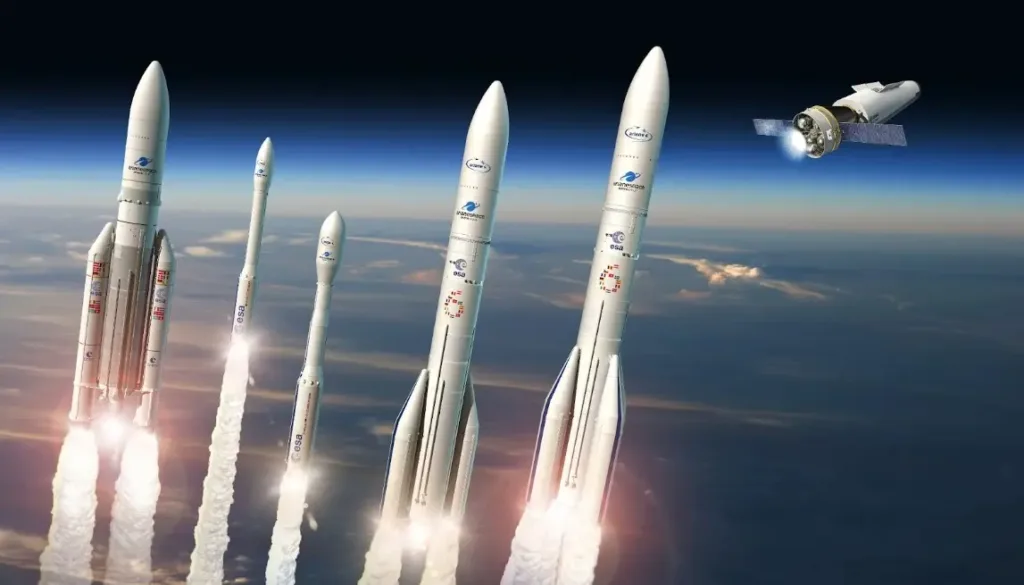Global satellite market value was estimated at $309.45 billion in late 2023-early 2024, with forecasts projecting a CAGR of 8.1% by 2034. If this projection proves true, the total space industry value will reach $729.53 billion in the next decade. This is an impressive figure, no doubt — but one should also keep in mind that the space industry is an incredibly vast segment, relying on many other submarkets. Clearly, satellite components play a vital role in industry development, with governments and private companies alike investing in space technology for communication, navigation, research, defence, etc. But what is the value of the satellite market?
According to 2024 estimates, the satellite components market is valued at $244.93 billion. Moreover, this figure is expected to show an annual growth rate of over 9% before this decade is over. But how big is the satellite component market? And what factors influence its growth? Below, we will explain key market segments, discuss the industry’s main drivers, and try to predict how spacecraft components will evolve in the next few years.
What are the segments of the satellite market?
Image Source- Satellite Components and Parts”
Traditionally, satellite mass has been a major classification factor. Currently, satellites (and, consequently their components) are segmented into:
● Small: under 500 kg
● Medium: 500-1,000 kg
● Large: over 1,000 kg
Orbit class, that is, spacecraft location when launched, also plays a part. Right now most spacecraft operate in Low Earth Orbit (LEO), closest to us at no more than 2000 km altitude. However, we have a lot of communication, as well as TV broadcasting satellites in Geostationary Earth Orbit (GEO), over 35,000 km above our planet. Navigation satellites including the GPS we all use every day, are deployed to Medium Earth Orbit (MEO), between 2,000 and 36,000 km above us.
The orbital destination is one of the major factors for segmenting the satellite component market because different altitudes require different technologies and component protection levels (space is as hostile for man-made tech components as it is for humans). So, the overall satellite component market can also be segmented by technology, especially when it comes to propulsion systems. Today, most satellite component manufacturers build electric, liquid-fuel, or gas-based propulsion systems; however, alternative means are being explored as well.
Of course, propulsion is not the only system component keeping the satellite operational. So, what are the components of a satellite? The details may vary, but essential components include:
● Antennas & transponders for relaying signals and communicating with ground stations;
● Power systems that usually include solar panels and/or batteries;
● Propulsion systems to maintain or change orbit using fuels already described above;
● Thermal control systems to withstand extreme temperature fluctuations in space, ranging from extremely high (when in direct sunlight) to extremely low (without access to sunlight)
● Command & data handling to receive and execute commands from the ground stations.
All of these components are usually developed and tested by different manufacturers, so they, too, can be seen as subsegments of the larger satellite components market. Now that you understand just how much room for creativity this niche offers, let’s move on to key industry drivers and future forecasts.
Satellite Components Market Forecast & Key Industry Drivers
The most prominent trend that has persisted for decades and is expected to continue is satellite miniaturization. While in the early days of space exploration, large satellites dominated the market, most spacecraft orbiting our planet today are small satellites. Technology development makes it possible to create compact and highly functional satellite components, further reducing development costs— this way, making space more accessible to organizations without massive budgets.
Of course, spacecraft miniaturization is not the only effect of technology evolving. More recent trends driving the entire industry include:
● Additive manufacturing: 3D printing is a cost-effective technology that allows for shortened production times (along with costs) while manufacturing antennas, engine parts, and other satellite components. Both NASA and ESA actively invest in additive manufacturing, producing all sorts of spacecraft electronics, including sensors and propulsion system components.
● Exploring new propellants: searching for more efficient, safer, and environmentally friendly propellants for satellites has led to significant advancements in propulsion technology. Some recent developments include green hydrazine propellant from NASA, iodine as an emerging alternative to xenon, and even water — when electrolyzed into hydrogen and oxygen, it can be used as a propellant for both chemical and electric propulsion systems.
The final but probably most important driver pushing satellite components further is active investment in space R&D. This change has been put forward by the ever-growing collaboration between government and private sectors. Today, these two players collaborate on space tech closer than they ever before.
For example, the US government keeps increasing its space budget, with substantial allocations for NASA, which, in turn, collaborates with private companies — particularly within the Artemis mission framework. ESA also increases its space funding, with a focus on maintaining leadership in Earth observation, improving navigation services, and investing in space exploration missions. All of this means that more exciting developments are underway.
Also Read-The Ultimate Guide to Wicker Chairs: Everything You Need to Know
